
Eric Arthur Blair was an English novelist, poet, essayist, journalist, and critic who wrote under the pen name of George Orwell. His work is characterised by lucid prose, social criticism, opposition to totalitarianism, and support of democratic socialism.
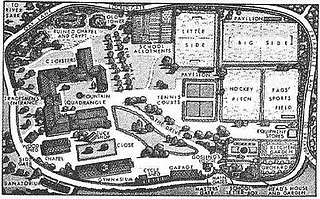
Greyfriars School is a fictional English public school used as a setting in the long-running series of stories by the writer Charles Hamilton, who wrote under the pen-name of Frank Richards. Although the stories are focused on the Remove, whose most famous pupil was Billy Bunter, other characters also featured on a regular basis.
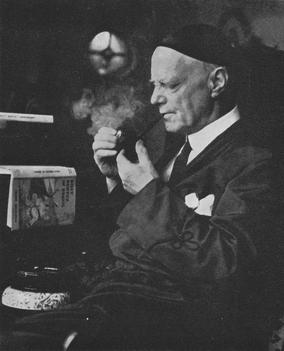
Charles Harold St. John Hamilton was an English writer, specialising in writing long-running series of stories for weekly magazines about recurrent casts of characters, his most frequent and famous genre being boys' public school stories, though he also wrote in other genres. He used a variety of pen-names, generally using a different name for each set of characters he wrote about, the most famous being Frank Richards for the Greyfriars School stories featuring Billy Bunter. Other important pen-names included Martin Clifford, Owen Conquest and Ralph Redway. He also wrote hundreds of stories under his real name such as the Ken King stories for The Modern Boy.

William George Bunter is a fictional schoolboy created by Charles Hamilton using the pen name Frank Richards. He features in stories set at Greyfriars School, a fictional English public school in Kent, originally published in the boys' weekly story paper The Magnet from 1908 to 1940. The character has appeared in novels, on television, in stage plays and in comic strips.
The Amalgamated Press (AP) was a British newspaper and magazine publishing company founded by journalist and entrepreneur Alfred Harmsworth (1865–1922) in 1901, gathering his many publishing ventures together under one banner. At one point the largest publishing company in the world, AP employed writers such as Arthur Mee, John Alexander Hammerton, Edwy Searles Brooks, and Charles Hamilton. Its subsidiary, the Educational Book Company, published The Harmsworth Self-Educator, The Children's Encyclopædia, and Harmsworth's Universal Encyclopaedia. The company's newspapers included the Daily Mail, the Daily Mirror, The Evening News, The Observer, and The Times. At its height, AP published over 70 magazines and operated three large printing works and paper mills in South London.

The Magnet was a British weekly boys' story paper published by Amalgamated Press. It ran from 1908 to 1940, publishing a total of 1,683 issues.
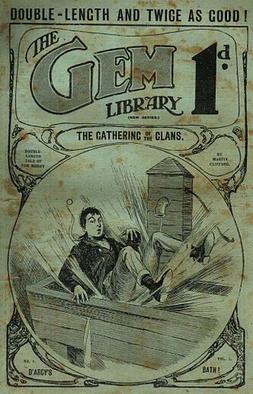
The Gem (1907–1939) was a story paper published in Great Britain by Amalgamated Press in the early 20th century, predominantly featuring the activities of boys at the fictional school St. Jim's. These stories were all written using the pen-name of "Martin Clifford," the majority by Charles Hamilton. Many issues also included a shorter serial story ; these parts of the paper were not written by Charles Hamilton.
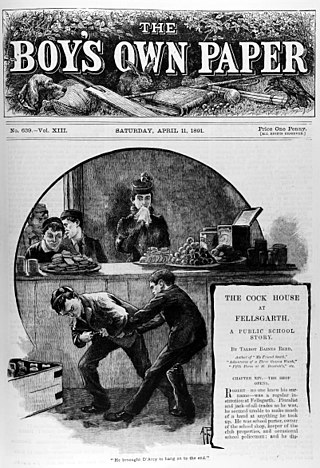
A story paper is a periodical publication similar to a literary magazine, but featuring illustrations and text stories, and aimed towards children and teenagers. Also known in Britain as "boys' weeklies", story papers were phenomenally popular before the outbreak of the Second World War.

Tom Merry is the principal character in the "St Jim's" stories which appeared in the boy's weekly paper, The Gem, from 1907 to 1939. The stories were all written using the pen-name of Martin Clifford, the majority by Charles Hamilton who was more widely known as Frank Richards, the creator of Billy Bunter.
Elizabeth Gertrude Bunter, better known as Bessie Bunter, is a fictional character created by Charles Hamilton, who also created her more famous brother Billy Bunter.

Magazines intended for boys fall into one of three classifications. These are comics which tell the story by means of strip cartoons; story papers which have several short stories; and pulp magazines which have a single, but complete, novella in them. The latter were not for the younger child and were often detective or western in content and were generally greater in cost. Several titles were published monthly whereas the other two categories were more frequent.
"Confessions of a Book Reviewer" is a narrative essay published in 1946 by the English author George Orwell. In it, he discusses the lifestyle of a book reviewer and criticises the practice of reviewing almost every book published, which gives rise to this lifestyle.

The bibliography of George Orwell includes journalism, essays, novels, and non-fiction books written by the British writer Eric Blair (1903–1950), either under his own name or, more usually, under his pen name George Orwell. Orwell was a prolific writer on topics related to contemporary English society and literary criticism, who has been declared "perhaps the 20th century's best chronicler of English culture." His non-fiction cultural and political criticism constitutes the majority of his work, but Orwell also wrote in several genres of fictional literature.
"Raffles and Miss Blandish" is an essay by the English writer George Orwell first published in Horizon in October 1944 as "The Ethics of the Detective Story from Raffles to Miss Blandish". Dwight Macdonald published the essay in politics in November 1944. It was reprinted in Critical Essays, London, 1946.

The Hotspur was a British boys' paper published by D. C. Thomson & Co. From 1933 to 1959, it was a boys' story paper; it was relaunched as a comic in October 1959, initially called the New Hotspur, and ceased publication in January 1981.
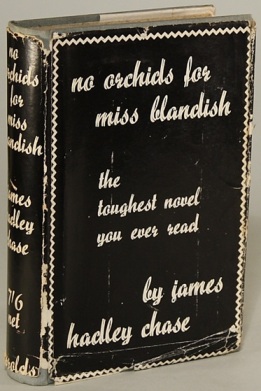
No Orchids for Miss Blandish is a 1939 crime novel by the British writer James Hadley Chase. It was a critical and commercial success upon release, though it also provoked considerable controversy due to its explicit depiction of sexuality and violence. In 1942, the novel was adapted into a stage play and in 1948 it became a British film. The novel became particularly popular with British servicemen during World War II.
Reginald Thompson Eves was a British editor and writer of comics and story papers for the Amalgamated Press.
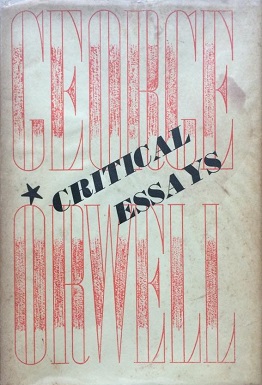
Critical Essays (1946) is a collection of wartime pieces by George Orwell. It covers a variety of topics in English literature, and also includes some pioneering studies of popular culture. It was acclaimed by critics, and Orwell himself thought it one of his most important books.

School Friend was the name of a pioneering story paper marketed exclusively to girls, published from 1919 to 1929. The name was later used by Amalgamated Press on a girls' comic in 1950.











